Technology has enabled TVs to become ever flatter, thinner, and lighter, but it can’t overcome the laws of physics when it comes to audio. Filling a room with sound requires substantial speakers that can move a lot of air, and those types of speakers just won’t fit inside a thin TV chassis. That’s where soundbars come in.
We’ll explain all the latest soundbar technology, show you the most important features you should look for, and name our top picks in budget, mid-range, and high-end categories. We’ll also provide links to all our reviews of soundbars currently on the market, so you can find exactly the right one for your needs.
Updated February 1, 2022 to add our Monoprice SB-600 review. While we applaud Monoprice for outfitting this moderately priced, Dolby Atmos-capable soundbar with multiple HDMI inputs and for supporting eARC, we encountered too many flaws to give this speaker a strong recommendation. Competition is fierce in this space, and we can recommend several soundbars that deliver even more for the money.
Here are our current top picks, with brief summaries explaining our reasoning. These will change over time as new models come in for evaluation. Our soundbar reviews will go into some depth, so we encourage you to follow the links to read them in their entirety. Beneath our top picks you’ll find some general guidance about soundbars, followed by explanations of the features you should consider when choosing one.
Links at the bottom of the page will take you the rest of our soundbar reviews.
Best budget soundbar
It doesn’t pack in Dolby Atmos support like many pricier soundbars do, but the Polk React sounds better than any competitors we’ve heard in its $250-ish price range, complete with detailed, nuanced audio and a surprisingly wide soundstage. The React comes with built-in Alexa, perfect for teeing up streaming music via voice commands, and the soundbar also supports Alexa Multi-Room Music, which means you can use it in Alexa speaker groups. Finally, you can upgrade the Polk React’s sound with Polk Audio’s optional wireless subwoofer and surround speaker kit.
Runner-up
If you’re strapped for cash but long to improve both your audio and streaming experiences, take a look at the Roku Streambar. It’s stronger in the latter category than the former, but its $130 price tag makes it a very strong value.
Best mid-range soundbar
Vizio’s M512a-H6 soundbar delivers powerful, vibrant sound for a reasonable price, complete with Dolby Atmos and DTS:X support, an easy setup process, and plenty of adjustments for tinkering with audio settings. There’s no Wi-Fi support, but that’s not unusual for a soundbar in this price range.
Runner-up
The second-gen Sonos Beam is our runner-up pick for best mid-priced soundbar. A powerful speaker for its size, the refreshed Beam adds Dolby Atmos and eARC support, and you can expand it into a full-fledged 5.1-channel system by adding a wireless sub and wireless surround speakers. The Beam also has built-in support for your choice of Amazon Alexa or Google Assistant, so it can become a key element in your smart home system. Apple fans, meanwhile, will appreciate the Beam’s support for AirPlay 2.
Best high-end soundbar
If you’re looking for a full-featured soundbar that will leave your living room swimming in sound, the Samsung HW-Q950A is our top pick. Equipped with 22 drivers in an 11.1.4-channel configuration, the HW-Q950A can handle both Dolby Atmos and DTS:X object-based audio, while its room-correction technologies will tailor the sound to the acoustics of your listening area. Alexa and AirPlay 2 are onboard, but most importantly, the HW-Q950A’s sonics are the best we’ve heard yet from a soundbar: immersive, detailed, balanced, deep, and controlled.
Runner-up
Vizio came up with a truly innovative alternative to installing speakers in your ceiling to enjoy immersive Dolby Atmos and DTS:X object-based soundtracks. In addition to building up-firing drivers in its soundbar and surround speakers, the drivers on the soundbar are motorized and automatically rotate up when the speaker detects the appropriate type of audio signal. When you want to hear stereo, these drivers rotate to face forward. We found the included subwoofer to be a bit too much of a good thing, but the Vizio Elevate is one of the most exciting soundbars we’ve heard in some time.
What exactly is a soundbar?
A soundbar is typically a one- or two-piece speaker system whose primary purpose is to bring quality sound back to modern TVs (two-piece systems include a subwoofer). They’re designed to appeal to people who can’t (because of the wiring requirements and/or expense associated with traditional home theater audio) or won’t (because they object to the visual intrusion an A/V receiver and six or more loudspeaker cabinets presents) install freestanding speakers.
The audio performance of nearly any soundbar will surpass the quality of just about any modern TV while consuming minimal space and requiring little more than a power cord and one or two cables. Soundbars are designed to fit in front of your TV if your TV is resting on a piece of furniture, or beneath your TV if it’s hanging on the wall.You can even find soundbars from TV manufacturers that are designed to match the aesthetic of the TV it’s paired with.
Zvox SB500 soundbar
Nearly all modern TV and movie soundtracks are recorded in surround sound, so most soundbars are equipped to decode at least Dolby Digital and play back discrete left, right, and center channels, plus low-frequency effects (LFE). A great many models include a separate self-amplified subwoofer to handle LFE, which establishes a wireless connection with the soundbar. Purchasing a soundbar doesn’t necessarily mean you’ll miss out on a full home-theater experience; in fact, some models offer optional surround speakers and others can even support object-oriented codecs, such as Dolby Atmos and DTS:X, that deliver a sensation of height.
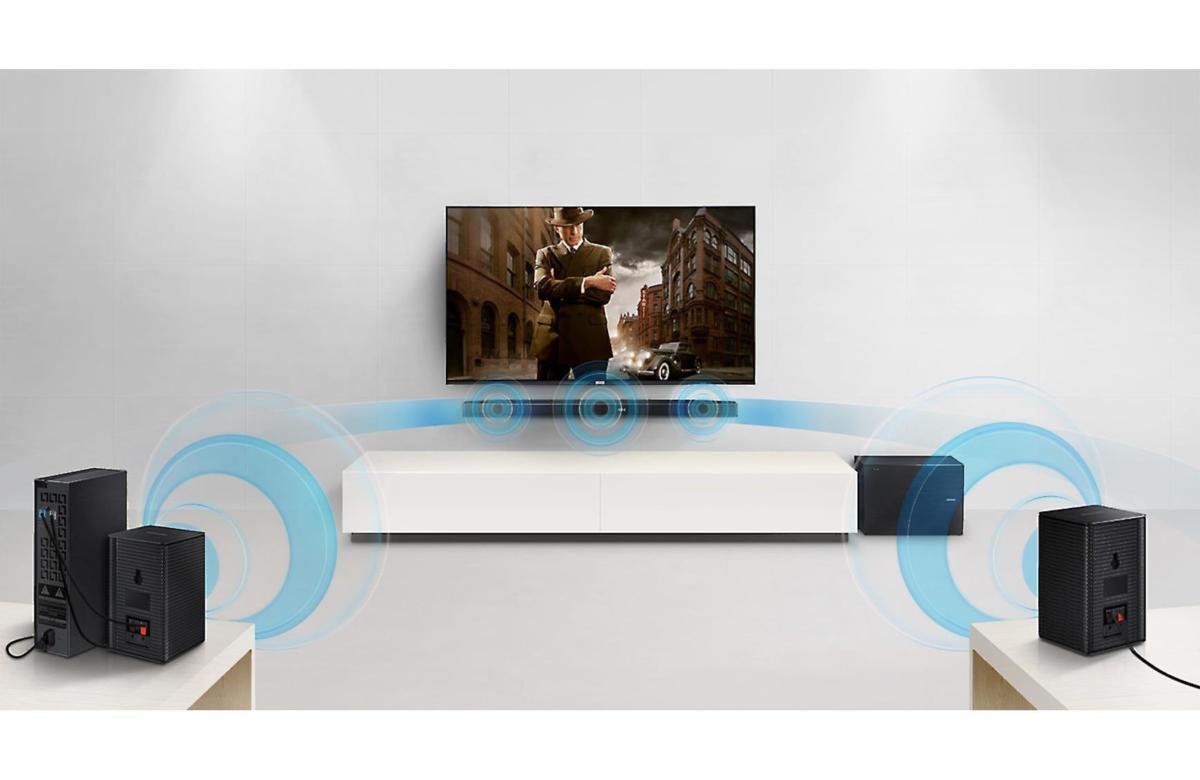
Samsung’s SWA-8500S wireless speaker kit to its HW-M450 soundbar adds left and right surround speakers without the need to run cables to the back of your room.
What size soundbar should I buy?
Most people buy a soundbar that is either the same width or narrower than their TV, but that really has more to do with aesthetics than audio performance. If your TV is on a piece of furniture, and you’re buying a soundbar that will sit in front of it, you need to take the speaker’s height into consideration, so that it doesn’t encroach on the screen or block the TV’s infrared receiver. Sound soundbars include an IR repeater for this reason.
Everything else being equal, the smaller the sound soundbar, the less room it has for larger speakers and features (codec support, wireless connectivity, multiple inputs and outputs, and so on). That’s not to say that a bigger speaker will always sound better than a larger one, of course.
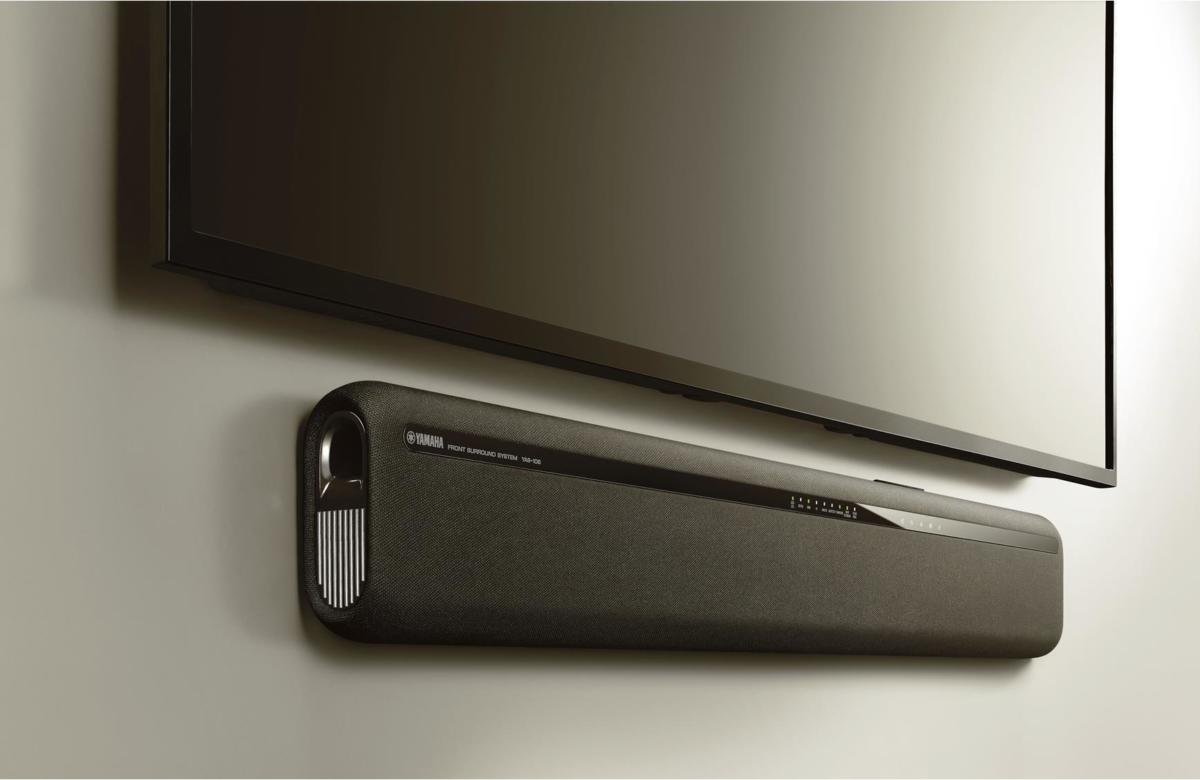
The Yamaha YAS-106 can be wall-mounted with a thin profile to match modern TVs.
Do soundbars support Dolby Atmos and DTS:X?
Buying a soundbar doesn’t mean you need to give up an immersive home theater experience, but be prepared to pay for that feature. Most soundbars are two-channel stereo or left-, center-, and right-channel speakers. Many of these soundbars claim to deliver a true surround-sound experience.
For soundbars to achieve the magic of surround sound, they must rely on the shape of your room, sophisticated digital signal processing, and psychoacoustics. Consequently, your mileage may vary. Some rooms will be more conducive to a good surround-sound experience than others. Some soundbars eschew this artificial processing and offer you the option of adding surround speakers, often wireless ones, to deliver a true 5.1-surround sound.
A few very expensive soundbars (typically starting at more than $1,000) support Dolby Atmos and/or DTS:X object-oriented audio. These soundbars have multiple speakers in the soundbar, some dedicated to left, center, and right channel duty while others handle the surround and height cues. Most soundbars in this class support 5.1.2- or 7.1.2-channel setups, rendering only the front height channels. Once again, you’ll need the right kind of room—with the right kind ceiling—to take advantage of an object-based audio soundbar.
Do I need an A/V Receiver?
There are two types of soundbars: active and passive. An active soundbar is more or less self contained. It has its own amplifier, digital signal processing, and volume control, all in the same cabinet as the speakers. Some active soundbars can even accommodate multiple HDMI sources. If you choose a model with HDMI support, make sure it also supports the audio return channel (ARC), to reduce the number of cables you’ll need between the soundbar and your TV.
A passive soundbar relies on the amplifier in an A/V receiver, just like a traditional loudspeaker. You connect the audio output from your TV (along with your Blu-ray player, media-streamer, and other components) to the A/V receiver’s inputs and the passive soundbar to the A/V receiver’s loudspeaker connections. The A/V receiver amplifies the signal and sends it to the speaker.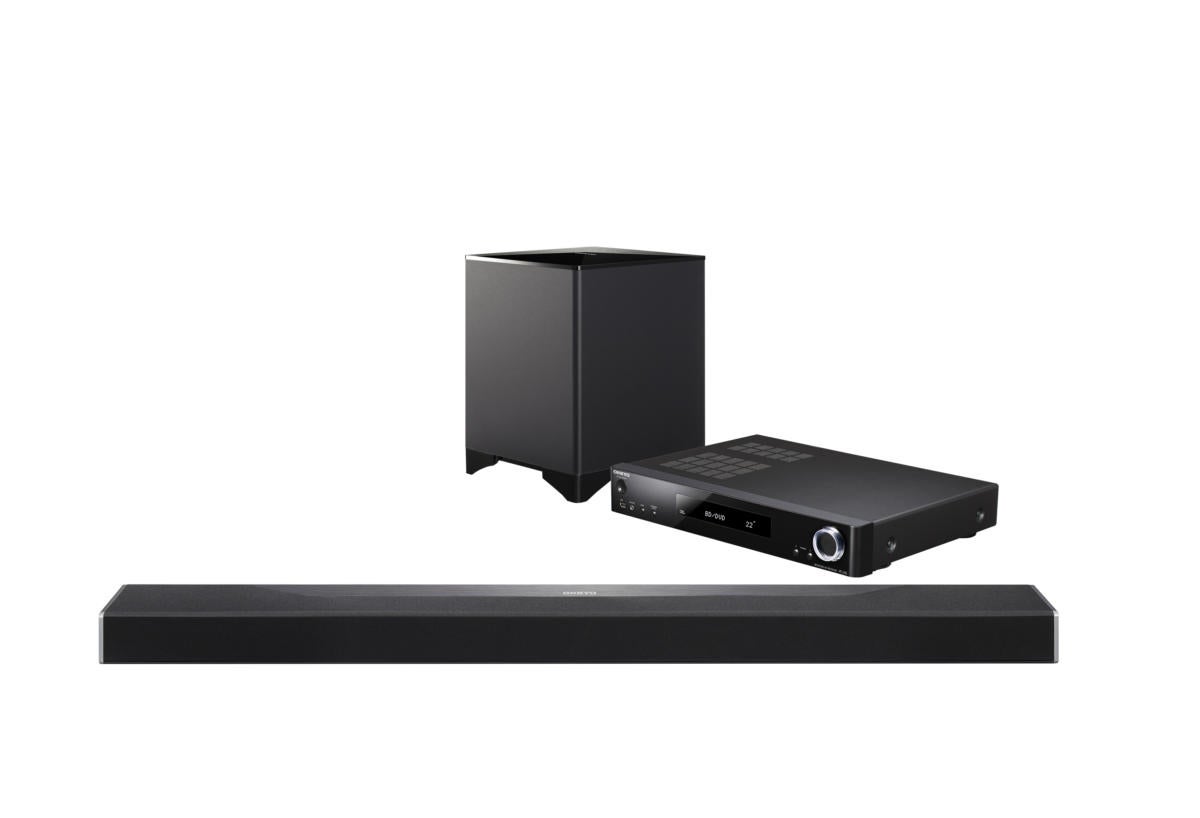 Onkyo
Onkyo
The Onkyo STB-A500 soundbar includes an AV receiver as part of the package.
Soundbar features you should look for
Sorting through different soundbars can be a dizzying experience. Here’s an alphabetized list of some of the most important features you’ll encounter
App control: If you want to control everything from your smartphone or tablet, you’ll want to know if the manufacturer offers an app for your mobile operating system of choice.
ARC: The acronym stands for Audio Return Channel. First introduced with HDMI 1.4, ARC enables your TV to send its audio output back through the HDMI cable to your soundbar or A/V receiver. This is especially important if you’re using your smart-TV’s onboard tuner or any of its media-streaming apps (Netflix, YouTube, Vudu, etc.). A newer variant, eARC (enhanced audio return channel) provides more bandwidth than the original ARC, enabling it to handling lossless high-resolution audio, including Dolby True HD and DTS:X. This article provides in-depth explanations of both HDMI ARC and HDMI eARC.
Dialog enhancement: If you find yourself turning on closed captions because you can’t make out what people on your TV are saying, you might want to invest in a soundbar that offers dialog enhancement. This feature uses an algorithm that identifies frequencies commonly associated with speech and runs them through a digital signal processor to make them easier to distinguish from sound effects, music, and other background audio.
Just want to see a list of our latest reviews? Click here to go there.

The Yamaha YSP-5600 is a 7.1.2 soundbar capable of supporting Dolby Atmos and DTS:X object-oriented audio formats. There are 44 beam drivers and two woofers in the sound bar that produce the surround and height effects.
Dolby Atmos and DTS:X: Some of today’s top-of-the-line soundbars will let you take advantage of the latest object-oriented audio technologies, such as Dolby Atmos and DTS:X. Soundbars that feature object-oriented audio, are typically limited to 5.1.2 or 7.1.2 configuration, where they only reproduce the front two height effects channels. (A 5.1.2-channel system has front left, center, front right, left surround, right surround, subwoofer, left height, and right height. A 7.1.2-channel is the same configuration plus left rear surround and right rear surround.)
EQ: Some soundbars have onboard EQ (equalization) to help tune the soundbar for a particular placement, such as on the wall or in a cabinet. The EQ adjusts certain sonic characteristics that happen to the speaker in a typical scenario, but don’t confuse EQ with room correction. Room correction far more sophisticated.
HDMI 2.0a If you don’t already have a 4K UHD TV that supports HDR (high dynamic range), the next set you buy probably will. You can learn more about HDR in this story, but it basically pumps up the contrast to reveal more detail and produce vibrant color. You’ll need a soundbar that supports HDMI 2.0a to ensure HDR information is passed through the soundbar from the source (e.g., an Ultra HD Blu-ray player) to your television.
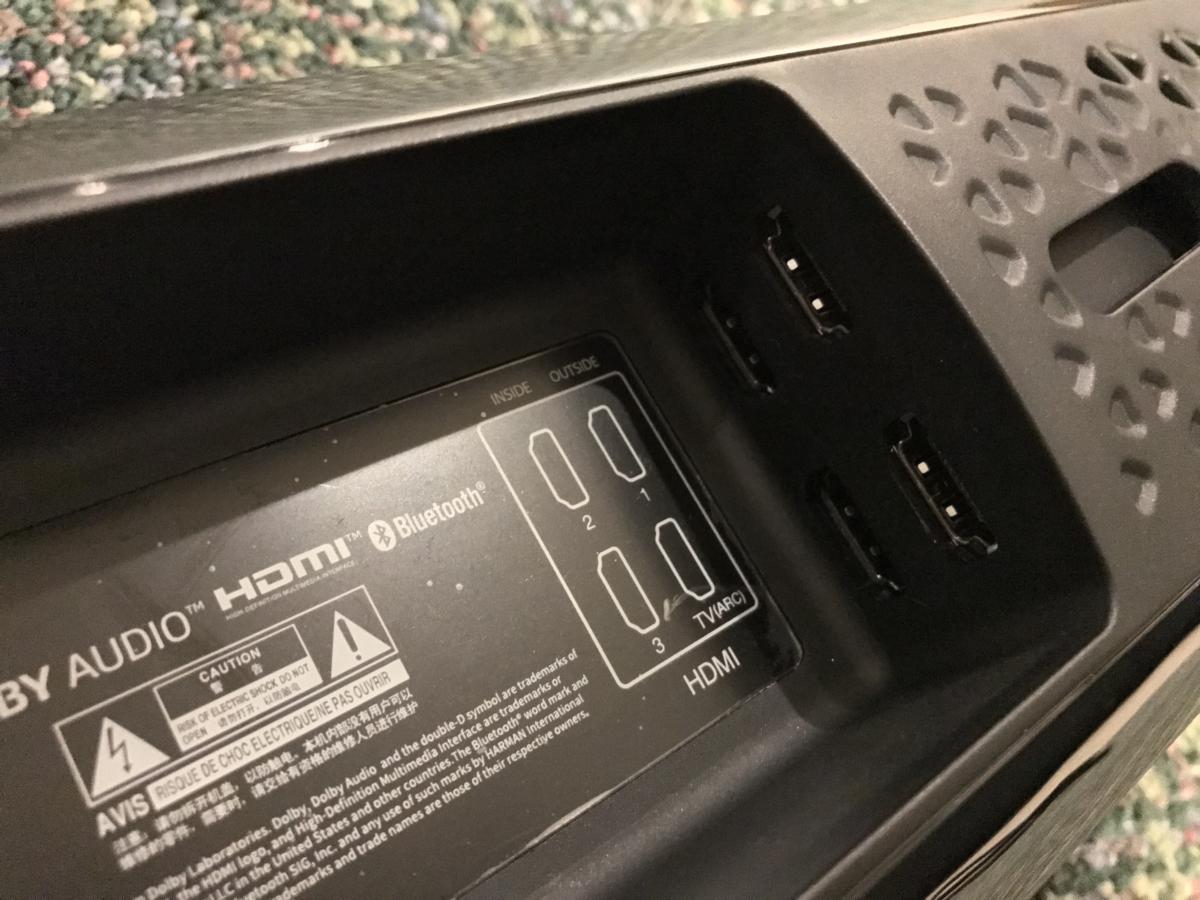
The JBL SB450 has multiple HDMI inputs.
Lossless audio: Do you have a growing collection of high-resolution music files in FLAC or ALAC formats? If you want to listen to them through your soundbar, you’ll want to make sure it can decode those files.
Multi-room audio: Some soundbars can be components in a multi-room audio system, but this usually entails choosing one platform and sticking with it all over your home (speakers that support DTS Play-Fi are an exception to that rule). The more typical proprietary systems include Denon’s Heos, Yamaha’s MusicCast, and—one of the most popular systems—Sonos. Sonos even allows you to pair its Playbar or Playbase with its wireless subwoofer and wireless satellite speakers (the Play:1, Play:3, or the second-generation Play:5) as surround channels to create a true 5.1-channel surround-sound setup. But you can’t go beyond that to add rear surrounds or height channels with a Sonos system.
Music streaming: Many of today’s soundbars can stream music over Wi-Fi or Bluetooth, but only a handful support Bluetooth with aptX for near CD-quality streaming. Apple’s AirPlay is an important feature for Apple enthusiasts with iPhones and iPods. Audio enthusiasts will want to know if the soundbar can decode lossless codecs such as FLAC and ALAC.
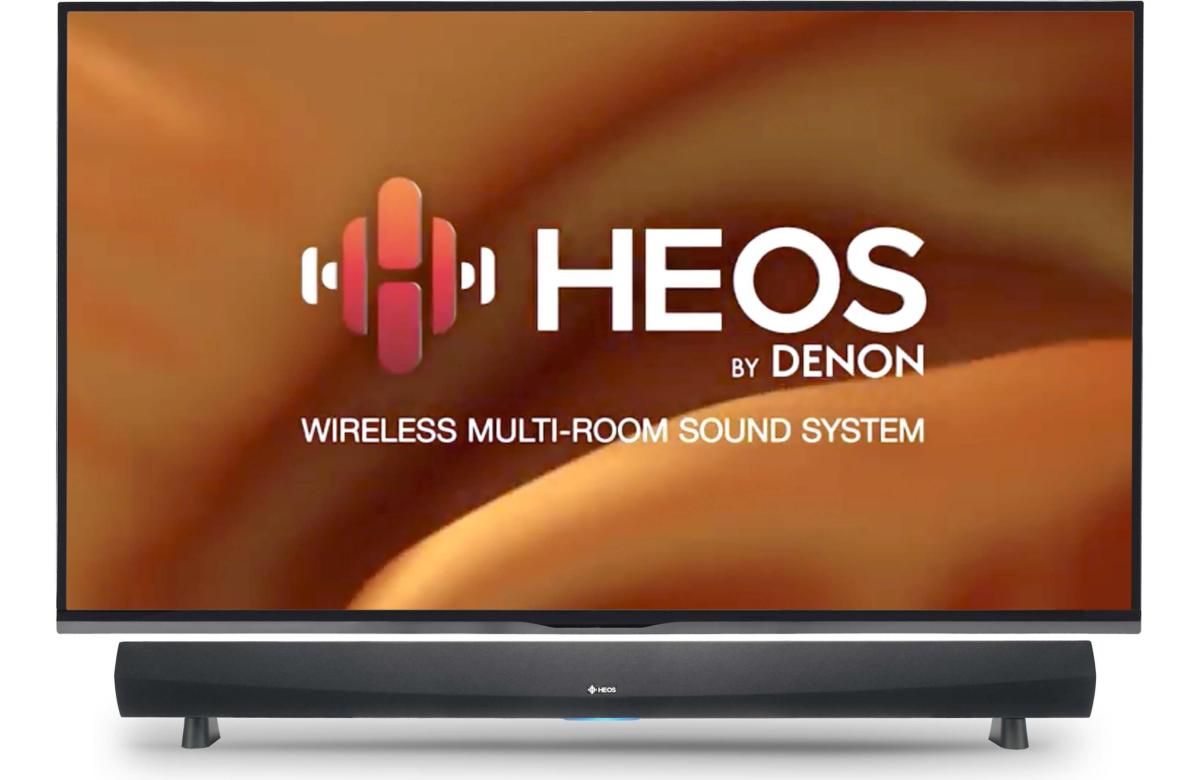
The HomeCinema sound bar ties in seamlessly with Denon’s Heos streaming ecosystem.
Room correction: Your room plays a critical part in how your soundbar will sound. Some manufacturers, such as Paradigm, build sophisticated and highly effective room-correction technology into their soundbars. The sonic benefits of a good soundbar with well-implemented room correction can be jaw-dropping, but that feature is usually expensive. You’ll typically won’t find room correction in soundbars priced less than $1,000.
Subwoofer support: If you love good, deep bass, then you’ll want to scope out a soundbar that can connect to a subwoofer. Some soundbars come pre-packaged with a sub (in many cases, a wireless model), while others provide a subwoofer output so you can use a cable to hook up your model of choice. The pre-packaged route might look attractive, but it typically means you can’t upgrade either component without junking them both.
Our latest soundbar reviews
Theo Nicolakis is a C-Level technologist and digital communications professional. He’s also a passionate audiophile and home theater aficionado.

